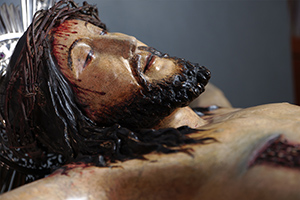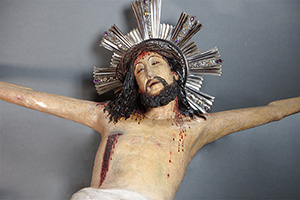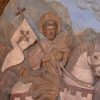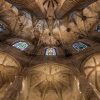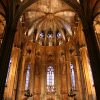
The most venerated image of Barcelona
The restoration process has revealed the magnificent original polychromy of this wooden sculpture, which is in very good condition. You can appreciate the expressiveness of the face and the realism of the wounds of the Passion.
Art historians specialising in sculpture now indicate that the crucifix could be from the 13th century. In any case, it is not from the 16th century, as was believed.
Devotion
The Christ of Lepanto is the most venerated image in Barcelona. Most of the year it can be found at the Chapel of the Blessed Sacrament in the Barcelona Cathedral, whereas during Lent it can be found at the Chapel of Saint Severus of Barcelona.
Popular devotion is alive and has continued over the centuries. Reflecting this esteem, the confraternity of the Sant Crist de Lepant, which dates back to at least 1651, was founded to keep the chapel and the cult of the Blessed Christ, especially during Holy Week.
Restoration
The Cathedral decided to restore the sculpture because the paint was beginning to flake. After studying the composition of the polychromy, the colour has been delicately retouched in the most damaged areas, and the entire image has been cleaned.
The darkened colour can be attributed to the effect of smoke and candle wax, but also to remnants of 19th-century varnishes and later repaintings to match the colour of the smoke and soot, materials that were easily removed with patience.
History
It is a gothic carving, possibly from the 13th century, little documented thus far. There is news of an image of a Holy Christ in the Cathedral of Barcelona since the fifteenth century, which could be one and the same.
Certain engravings and paintings suggest that at the end of the 19th century, it had not yet gotten its dark patina.
Tradition
According to tradition, this image was aboard the flagship at the decisive Battle of Lepanto of 1571, which prevented the Ottoman Empire from advancing further towards Europe.
There are two traditional explanations for the characteristic curvature of the torso: according to one, it was to dodge a Turkish cannonball; as per the other, it was to cover a hole in the ship’s hold, where the statue was being kept at the time, and thus prevent the ship from sinking.


